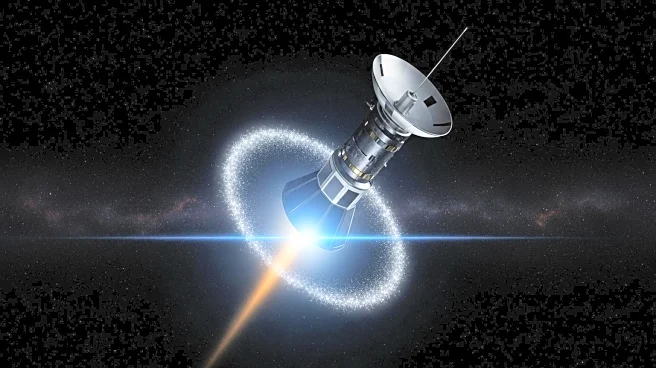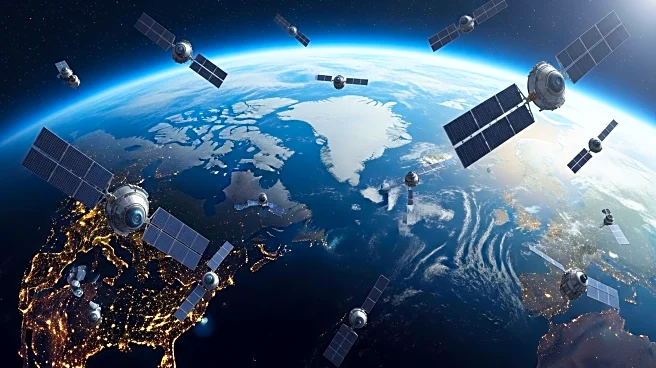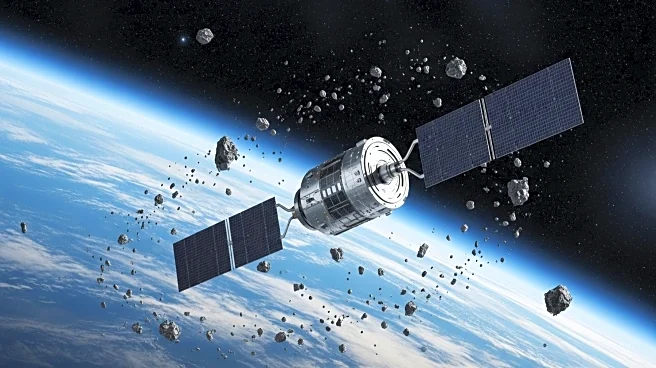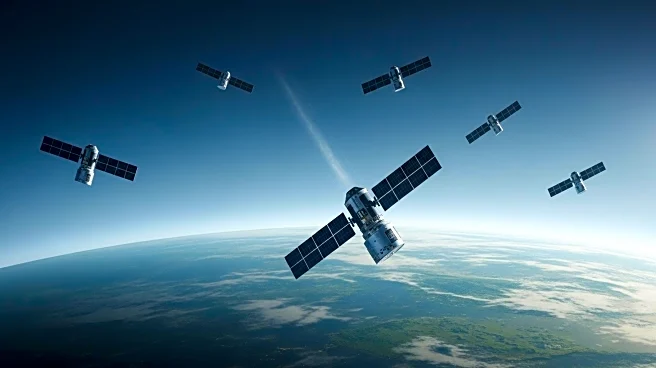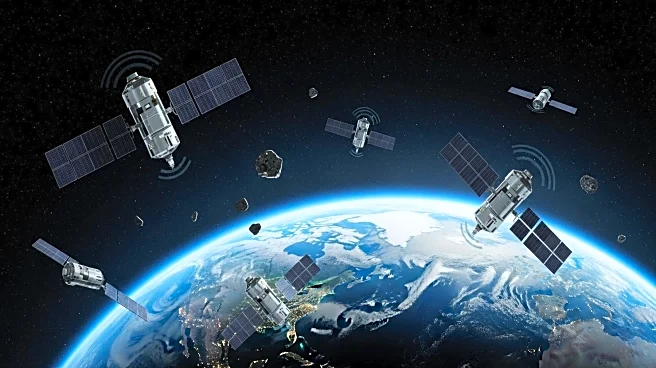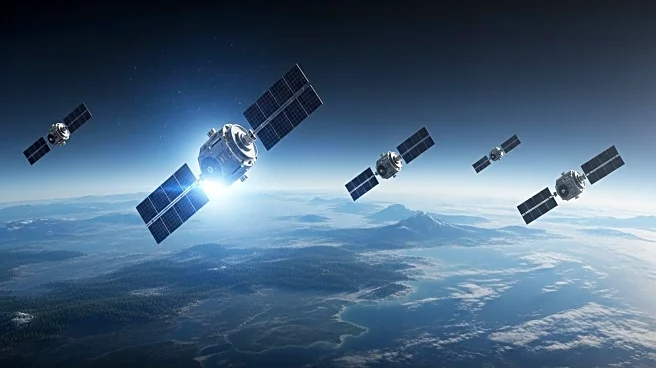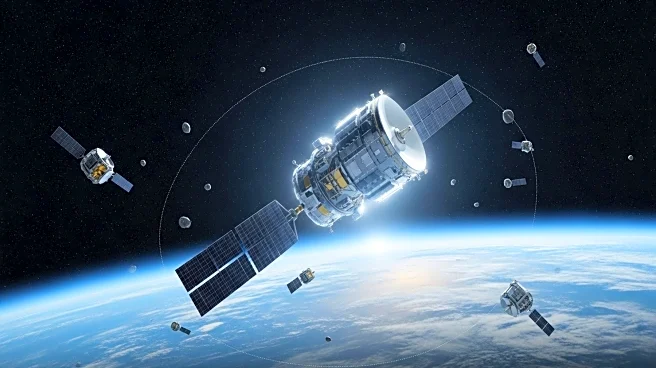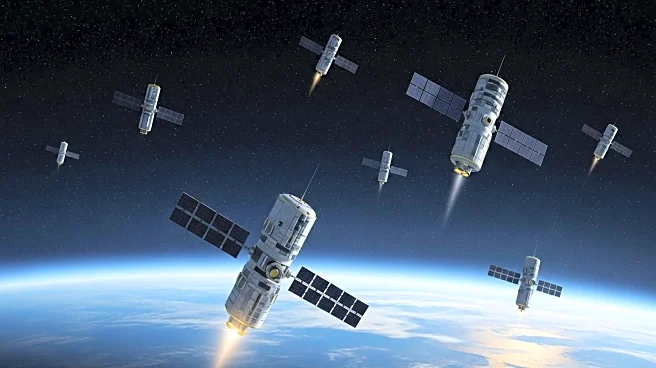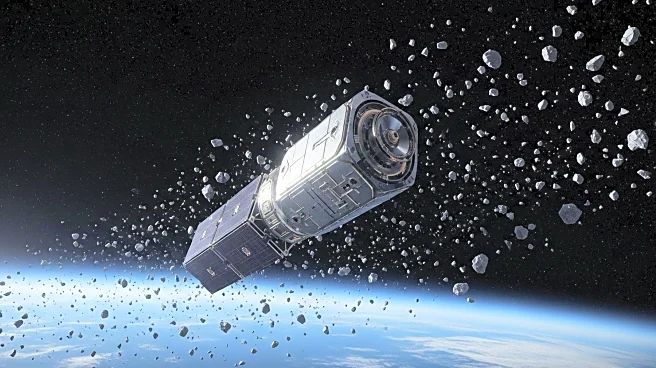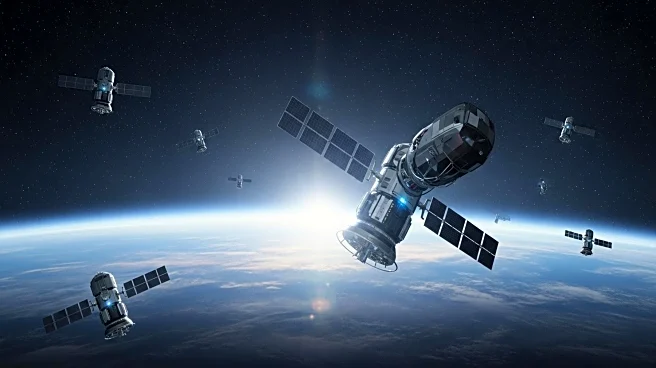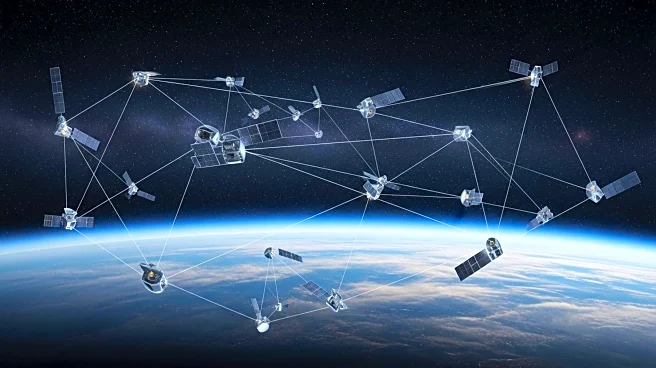What's Happening?
SpaceX's Starlink satellites are de-orbiting and falling to Earth at a rate of one to two per day, according to recent reports. This phenomenon is contributing to the growing issue of space debris in low-Earth orbit. The satellites, which have a lifespan of 5 to 7 years, are part of a larger constellation aimed at providing affordable worldwide internet. However, the increasing number of de-orbiting satellites could lead to Kessler syndrome, a scenario where space debris collisions create a chain reaction, potentially clogging low-Earth orbit and obstructing the view of the night sky for ground-based telescopes. Astrophysicist Jonathan McDowell has expressed concern over the situation, noting that solar activity can exacerbate the problem by causing satellites to malfunction and fall. The presence of metal particles from these satellites in the stratosphere also raises environmental concerns, as they could potentially harm the ozone layer.
Why It's Important?
The de-orbiting of Starlink satellites highlights the growing challenge of managing space debris, which poses risks to both current and future satellite operations. If Kessler syndrome occurs, it could severely limit the ability to launch new satellites, impacting industries reliant on satellite technology, such as telecommunications and global positioning systems. The environmental implications are also significant, as metal particles from de-orbiting satellites could contribute to ozone layer depletion, affecting climate and health. Stakeholders in the space industry, including other satellite operators and regulatory bodies, must address these challenges to ensure sustainable space operations and mitigate potential environmental impacts.
What's Next?
As SpaceX continues to expand its Starlink operations, the frequency of satellite de-orbiting is expected to increase. This may prompt regulatory bodies to implement stricter guidelines for satellite launches and debris management. The space industry may also explore technological solutions to extend satellite lifespans and reduce debris. International cooperation could be crucial in developing comprehensive strategies to address space debris and its environmental impacts. Monitoring and research efforts will likely intensify to better understand the implications of metal particles in the stratosphere and their potential effects on the ozone layer.
Beyond the Headlines
The situation with Starlink satellites underscores the ethical considerations of space exploration and commercialization. As private companies like SpaceX and others continue to launch large satellite constellations, questions arise about the responsibility of these entities to manage space debris and protect the environment. The long-term sustainability of space activities may depend on balancing commercial interests with environmental stewardship and international collaboration.
